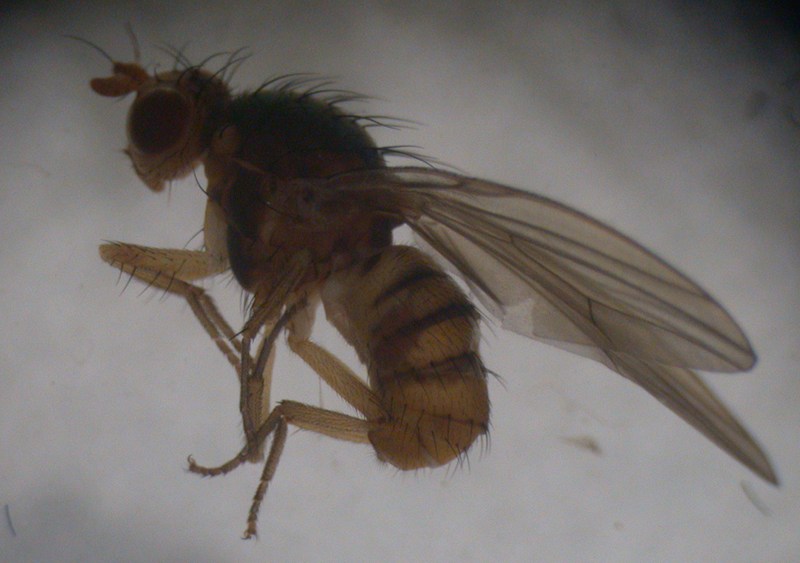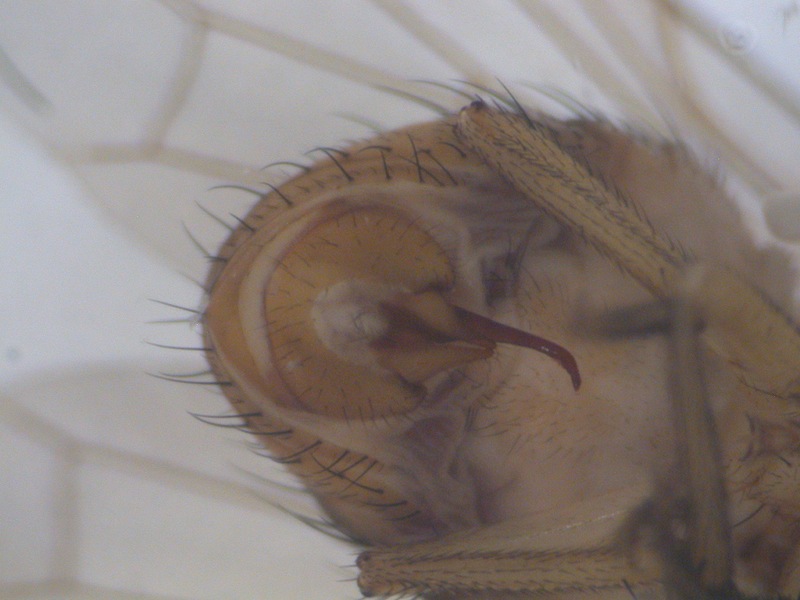Diptera.info :: Identification queries :: Diptera (adults)
Who is here? 1 guest(s)
|
Sweden: Pseudolyciella, male (with genitalia)
|
|
| viktor j nilsson |
Posted on 12-01-2010 23:44
|
|
Member Location: Gothenburg, Sweden Posts: 203 Joined: 25.02.08 |
Hey, this time a male Pseudolyciella - either P. stylata, P. pallidiventris or P. subpallidiventris. South of Sweden, the Island Öland. 1st-26th august. I get terribly confused by the genitalia figures in Shatalkin (2000). From the illustration, the cerci and paramere of P. stylata looks monstrous - long, straight and narrow like needles! Although Shatalkin´s figure is drawn laterally and my picture of the genitalia is from ventral side, I just can´t accept that this could be P.stylata. But nonetheless - I can only see a single paramere lobe, and subpallidiventris and pallidiventris is supposed to have "lobes of parameres subequal in length". What am I missing? Thanks, Viktor viktor j nilsson attached the following image:  [70.03Kb] Edited by viktor j nilsson on 12-01-2010 23:48 |
|
|
|
| viktor j nilsson |
Posted on 12-01-2010 23:44
|
|
Member Location: Gothenburg, Sweden Posts: 203 Joined: 25.02.08 |
genitalia
viktor j nilsson attached the following image:  [97.11Kb] |
|
|
|
| Paul Beuk |
Posted on 13-01-2010 00:10
|
|
Super Administrator Location: Netherlands Posts: 19403 Joined: 11.05.04 |
This would indeed be P. stylata but I have experienced on several occasions that the relative lenghts of the parameres are variable. Shatalkin's figure for stylata appears to show the at maximum length difference. As there still is no reliable character to separate females I have the uncanny feeling that it is still possible that these group of three species represents just one single species with variation in the relative lengths of the parameres.
Paul - - - - Paul Beuk on https://diptera.info |
| viktor j nilsson |
Posted on 13-01-2010 23:58
|
|
Member Location: Gothenburg, Sweden Posts: 203 Joined: 25.02.08 |
Ouch, yeah this seems like a real mess. Now that you mention this I think I remember that I have read about this somewhere else on this forum. In Merz´s paper on the Fallén types I am intrigued to read that individuals of all three "species" are represented in Fallén´s type series of P, pallidiventris! Would be really cool to look deeper into this variation - maybe this is a sign of an evolutionary arms race between the sexes in different populations, or if there are just loads of widespread variation in genital shape between three closely related species? Edited by viktor j nilsson on 13-01-2010 23:59 |
|
|
|
| Jump to Forum: |













